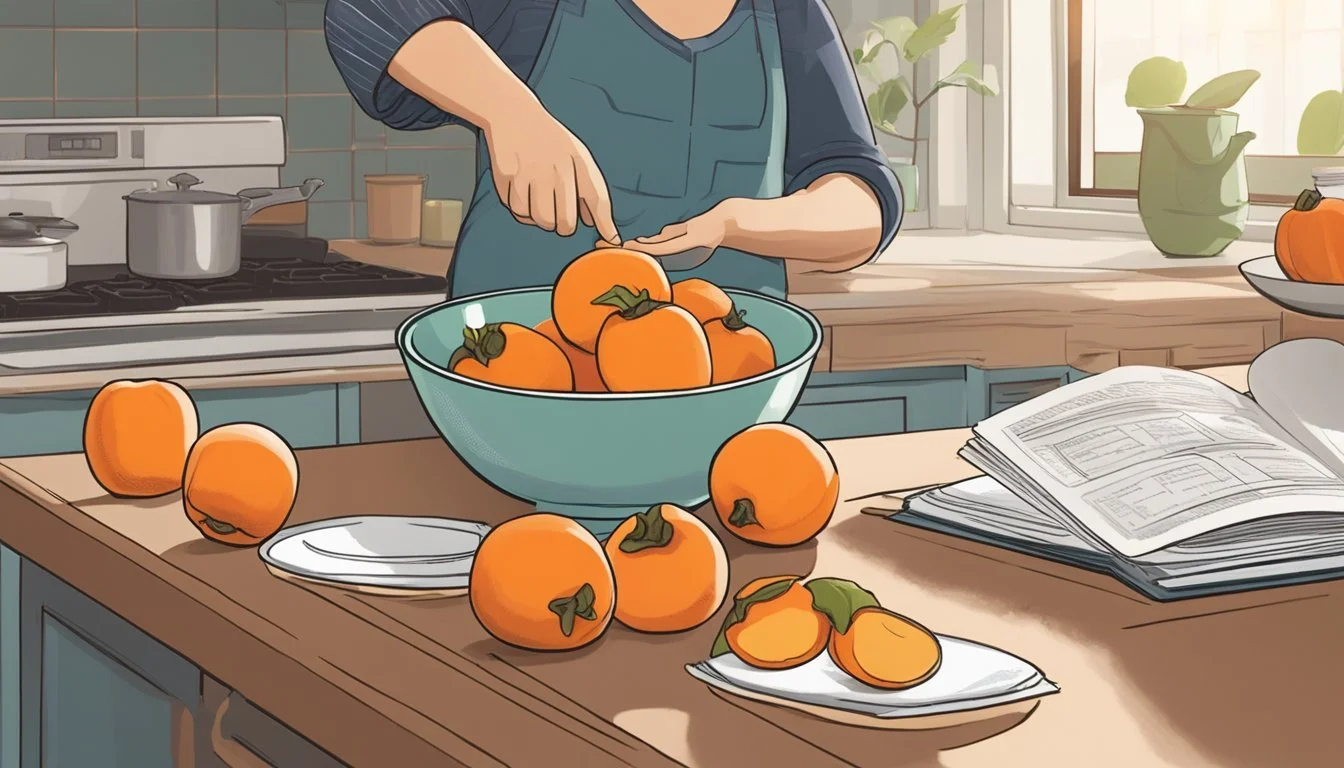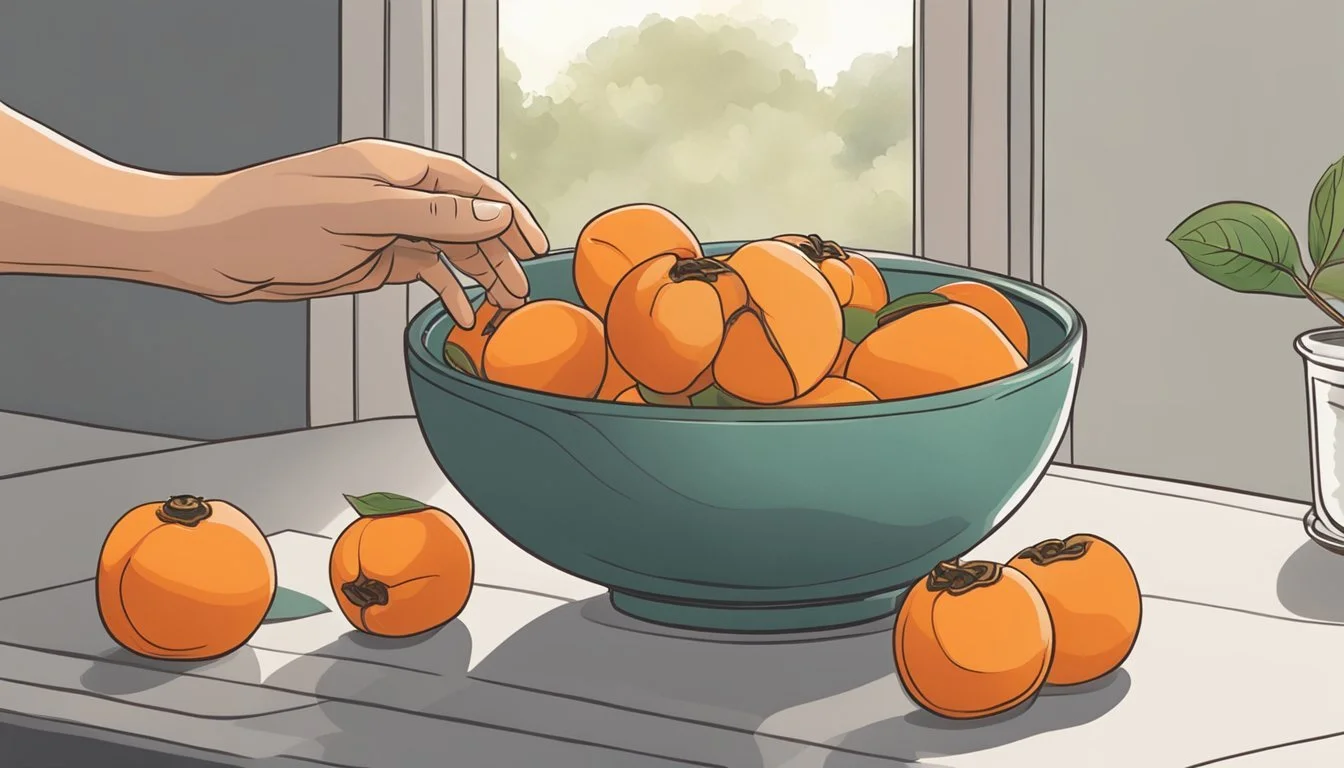How to Substitute Persimmons for Peaches
A Guide for Fresh and Baked Recipes
Persimmons and peaches share several culinary characteristics, which allows for their use as mutual substitutes in various recipes. When using peaches to replace persimmons, understanding the texture and flavor profile of each fruit (What wine goes well with fruit?) ensures that the substitution maintains the dish's integrity. Persimmons, with their honey-like sweetness and smooth texture, are a prized ingredient in both sweet and savory dishes.
Substituting peaches for persimmons is particularly effective in recipes where fruit is meant to complement other flavors rather than dominate them. Peaches, being juicy and sweet with a hint of acidity, can mimic persimmon's role in dishes such as salads, desserts, and jams. They bring a similar softness when ripe but can also provide a slightly firmer texture if used when less mature, offering versatility in culinary applications.
The process of substitution is relatively straightforward, aiming for a one-to-one ratio by volume or weight, depending on the recipe's requirements. It's best to consider the state of the peach—whether it's fresh, canned, or frozen—to closely match the consistency the persimmon would have provided. The success of using peaches as a substitute also depends on the specific type of persimmon intended to be replaced, as their flavor intensity and texture may vary.
Understanding Persimmons
Persimmons are versatile fruits (What wine goes well with fruits?) valued for their sweet flavor and rich nutrient content. They are broadly categorized into astringent and non-astringent types, each with unique culinary uses.
Varieties of Persimmons
Astringent Persimmons: The most well-known astringent persimmon is the Hachiya, which is shaped like an acorn. This variety is high in tannins and only palatable when fully ripe, at which point it becomes jelly-soft.
Non-Astringent Persimmons: Fuyu and Sharon Fruit exemplify non-astringent persimmons. These can be consumed while still firm, as they contain fewer tannins. The Fuyu is squat and resembles a tomato in shape, whereas the Sharon fruit is similar but typically seedless.
Nutritional Profile
Persimmons are a nutritious choice, offering:
Vitamin A: Essential for immune function and eye health.
Vitamin C: An antioxidant that supports skin and overall health.
Antioxidants: Help protect the body from oxidative stress.
Fiber: Important for digestive health.
A nutritional comparison in tabular form:
Nutrient Content in Persimmons Vitamin A High Vitamin C Moderate to High Antioxidants Present Fiber Good Source
Seasonal Availability
Persimmons are typically in season during the fall and early winter months. The precise timing can vary by region, but generally, this is when they reach peak ripeness and flavor. Availability may extend due to controlled ripening techniques and global importation, allowing for a broader consumption period.
Characteristics of Peaches
Peaches are a versatile fruit known for their juicy sweetness and use in various culinary applications, from desserts to salads.
Peach Varieties
Peaches come in hundreds of varieties, with characteristics that can vary markedly from one type to the next. They are broadly classified into yellow-fleshed or white-fleshed peaches and further identified by their stone's adherence to flesh – clingstone, freestone, or semi-freestone. Major peach producers globally include countries like China, Italy, Spain, and the United States where breeding has led to a rich variety of heirloom and hybrid fruits.
Peach Flavor Profile
The flavor of a peach is often described as refreshingly sweet with a hint of acidity, which makes it stand out. The degree of sweetness and flavor intensity can be dependent on the peach’s variety and level of ripeness. When ripe, peaches exhibit a fragrant aroma and their flesh becomes notably juicy, contributing to their popularity, especially in fresh applications.
Using Peaches in Recipes
Peaches are a favorite in both savory and sweet culinary creations. They have a firm yet tender texture that holds up well in baking and grilling, adding a sweet, fruity element to dishes. The fruit is commonly used in:
Desserts: Pies, cobblers, and ice creams
Salads: Fresh slices added for a sweet contrast
Baking: Muffins, bread, and cakes
Additionally, the fruit can be preserved by canning or drying, and substitutions in recipes are often made based on weight or volume, maintaining the flavor profile integral to the desired dish.
Substituting Persimmons for Peaches
When substituting persimmons for peaches in recipes, it's essential to consider the differences in taste and texture, and to adjust sugar and spices as well as cooking times accordingly to achieve the desired outcome.
Taste and Texture Considerations
Ripe persimmons have a sweet and honey-like flavor with a silky smooth texture when fully ripe, which can differ from the tangy-sweet flavor and the softer flesh of peaches. When one opts for persimmons as a substitute in baking or cooking, it may be necessary to assess the fruit's ripeness. Astringent varieties of persimmons, like the Hachiya, should be used only when completely soft, whereas non-astringent varieties like Fuyu can be used while still firm. For textural integrity in baked goods, non-astringent persimmons are preferable.
Peach Texture: Soft when ripe
Persimmon Texture: Firm to pudding-like, depending on the variety
Adjusting Sugar and Spices
Persimmons might inherently be sweeter than peaches, especially if the peaches are not fully ripe. This natural sweetness means sugar content in recipes may need to be reduced. Adjustments to spices might also be necessary since persimmons can pair well with warm spices like cinnamon and nutmeg, which might be less prominent with peaches.
Initial Sugar Recommendation: Reduce sugar by around 25% when substituting with persimmons
Spice Pairing:
Persimmons: Cinnamon, Nutmeg, Clove
Peaches: Ginger, Vanilla
Cooking Time Adjustments
The cooking time might need to be altered when substituting persimmons for peaches. Because persimmons can hold their shape better and require less time to break down compared to peaches, it's important to monitor them closely during cooking or baking to prevent overcooking, which could result in a mushy texture.
Peach Cooking Time: Longer to soften fruit
Persimmon Cooking Time: Shorter to maintain structure
Each recipe will differ, and these adjustments should be seen as a starting point. It's always recommended to taste and adjust throughout the cooking process.
Recipe Adaptations
When substituting persimmons for peaches, chefs need to consider the texture, sweetness, and moisture content to maintain the integrity of the original recipe.
Baked Goods and Desserts
In pies and other baked goods, the firmer texture of Fuyu persimmons makes them an excellent stand-in for peaches. One should cut the persimmons into slices or dices, mirroring the size specified for peaches in the recipe.
Peach Pie: Replace each cup of sliced peaches with an equal amount of sliced Fuyu persimmons.
Cobblers and Crisps: Fuyu persimmons can also replace peaches in equal measure to retain the dessert’s structure.
Salads and Savory Dishes
Persimmons can bring a unique sweetness to salads and savory dishes where peaches are typically used. The key is to balance the flavor profile with the dish's other ingredients.
Peach Salad: Substitute persimmon slices for peach slices in green or fruit salads.
Savory Dishes: Fuyu persimmons, chopped or sliced, can be incorporated into savory peach recipes, respecting the original peach quantities.
Sauces, Jams, and Purees
For sauces, jams, and pureed preparations, the consistency and sweetness may vary. It's recommended to start with less than the recipe calls for and sweeten as necessary.
Peach Sauce: Begin with a 1:1 ratio when substituting persimmon puree for peach puree, and adjust to taste.
Jam: If making jam, the natural pectin content in persimmons can differ, so pectin levels should be adjusted accordingly.
Alternative Fruit Substitutes
When looking to substitute persimmons in recipes that typically call for peaches, it’s important to consider fruits that offer a similar sweetness and texture. The following options illustrate ideal fruit substitutes based on texture similarity and substitution convenience.
Stone Fruits and Similar Textures
Apricots: These have a similar sweet flavor profile and can be used in equal amounts as persimmons. Apricots excel in baked goods where they maintain their shape and offer a pleasing texture.
Nectarines: With a smooth skin and juicy flesh, nectarines provide a similar texture and subtle sweetness.
Plums: When ripe, plums offer a sweet and slightly tart flavor, which closely mimics the taste of persimmons and can be used interchangeably in most recipes.
Tropical Fruits as Substitutes
Mango: Known for its bright flavor and smooth texture, mangoes can replace persimmons to impart a tropical twist to dishes.
Pineapple: Its tart and sweet taste makes it a favorable substitute for persimmons, particularly in recipes that require a pronounced fruity flavor.
Using Dried or Canned Fruits
Dried Apricots: For a concentrated flavor, dried apricots can be used. They work well in baked dishes, where their chewiness adds an interesting texture.
Canned Peaches: A convenient option that works in a pinch are peaches preserved in syrup or juice, used at a one-to-one ratio.
Frozen Berries: An easily accessible substitute for persimmons could be berries like raspberries or blackberries, considering they provide a compatible texture to peach-based recipes, though the flavor profile will differ.
Additional Tips and FAQs
This section provides practical advice for selecting the right persimmons and addresses common queries on substituting persimmons for peaches.
Selecting and Storing Persimmons
When choosing persimmons as substitutes for peaches, one should look for ripe fruits that yield slightly under gentle pressure. Ripe persimmons should have a rich color and be free of blemishes. To store, persimmons can be kept at room temperature until they reach the desired ripeness. Once ripe, they should be refrigerated to prolong freshness. For the best flavor and texture in recipes, select Fuyu persimmons from a farmers market or grocery store; they tend to be sweeter and are ideal for baking and cooking.
Common Substitution Questions
When substituting persimmons for peaches, numerous questions may arise:
What about the texture difference?
Firm, ripe Fuyu persimmons are similar in texture to peaches and will work well in most recipes.
Can I use persimmons in all recipes calling for peaches?
Persimmons make excellent substitutes in baked goods, jams, and sauces. However, they may not be suitable for recipes that require the tartness of peaches.
Is there a specific ratio to follow when substituting?
Use persimmons in a 1:1 ratio when replacing peaches, adjusting as needed based on sweetness and moisture content.
How do I prepare persimmons for substitution?
Remove the leaves, wash the fruit, slice and remove the core. If the skin is thick or tough, it can be peeled.
By keeping these tips in mind, home cooks can confidently substitute persimmons for peaches in their favorite recipes.








